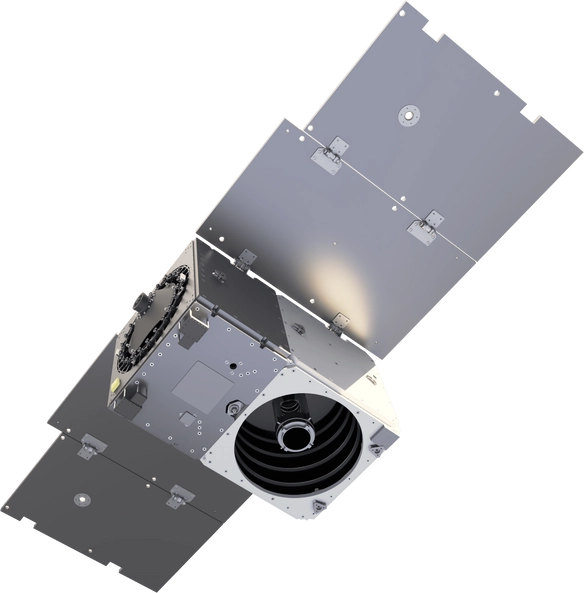
GeoEye-1
Ideal for large-scale mapping projects, GeoEye-1 provides highly detailed imagery at .46-meter panchromatic and 1.84-meter multispectral resolutions. It can geolocate features to less than 5m, offers stereoscopic collection on a single pass, and can revisit any point on Earth once every three days.
Very High Resolution
Industry-leading geolocation accuracy
High capacity over a broad range of collection types
Direct downlink to customer sites available
Frequent visits at high resolution

GeoEye-1 Specs

Launch Information
Date: September 6, 2008
Launch vehicle: Delta II
Launch site: Vandenberg Air Force Base, California
Orbit
Altitude: 681km
Type: Sun-synchronous, 10:30 am descending node
Period: 98 min
Altitude: 770km
Type: Sun-synchronous, 10:30 am descending node
Period: 100 min
Spacecraft Size, Mass and Power
4186 lbs
4.34 m in length
Sensor Bands
Panchromatic
Multispectral
Sensor Resolution
50 cm Ground Sample Distance (GSD) at nadir
55 cm GSD at 20° off-nadir
Dynamic Range
11-bits per pixel
Swath Width
Nominal Swath Width: up to 17.3km nadir
Attitude Determination & Control
Type: 3-axis Stabilized
Star tracker/IRU/reaction wheels, GPS
Pointing Accuracy & Knowledge
Accuracy: <500 m at image start and stop
Knowledge: Supports geolocation accuracy below
Retargeting Agility
Time to slew 200 km: 20 sec
Onboard Storage
1 Tbit capacity
Communications
Payload Data: X-band 740/150 Mbps AES/DES encryption
Housekeeping: X-band 64 kbps AES encryption
Max Contiguous Area Collected in a Single Pass (30° off-nadir)
Mono: 111 x 112 km (6 strips)
Stereo: 51 x 112 km (3 pairs)
Revisit Frequency (at 40°N Latitude)
5 m CE90, 3 m CE90 (measured)
Geolocation
Accuracy (CE90)
Demonstrated <4.0 m CE90 without ground control
Capacity
1.3 million sq km per day
Unsure if
GeoEye-1 is right
for your project?
You shouldn’t have to be an expert in high-resolution satellite imagery to find what you need.
Our team is dedicated to making the process easy for you. All you have to do is tell us the problem. We find the answers from a vendor-agnostic perspective and present you with clear, simple solutions.
Tell us the problem
Explain the situation to us on your terms. We’ll translate it into the world of Satellite Imagery.
Review Your Options
Be presented with a simple choice of the top 2-3 imagery solutions for your project.
Make confident decisions
Know you have the right data in hand to make the critical decisions that keep your project moving forward.
Other Satellites
When we need high-resolution satellite imagery, we trust Pacgeo for their quality imagery and reliable turnaround times.
David Bluestone
Vice President of Exploration, Bluestone Resources
Ordering high-res satellite imagery through a partner agency order desk was always painful and fraught with multiple issues. Dealing directly with Pacgeo allows me to bypass the aforementioned issues, while getting quick and reliable access to the data I need.
Government Employee
Government of Canada




